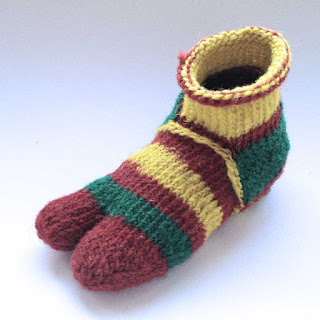Tablet-woven band from Saint-Maurice

This early medieval band, woven in the combination of tabby weave and floatwork technique, intriqued me ever since I learned about it in Collingwood's Tablet Weaving, and after reading more in Schmedding's Mittealterliche Textilien , my interest grew even stronger. For understanding this band both books are necessary, as each of them contains incomplete information. According to Schmedding, white linen was used for a weft, and white linen, red, yellow, orange and dark blue wool were used for a warp, but no explanation was given how these five colors were aranged in tablets. Collingood clarified that three central yellow threads were replaced by orange ones, but according to his description it seems that only wool was used as a warp. Collingwood reconstructed this band using 18 two-holed tablets (and published a pattern for it), with a note that it "can be woven by using half the number of four-holed tablets, each carrying all four colours. The result is almost ident...


